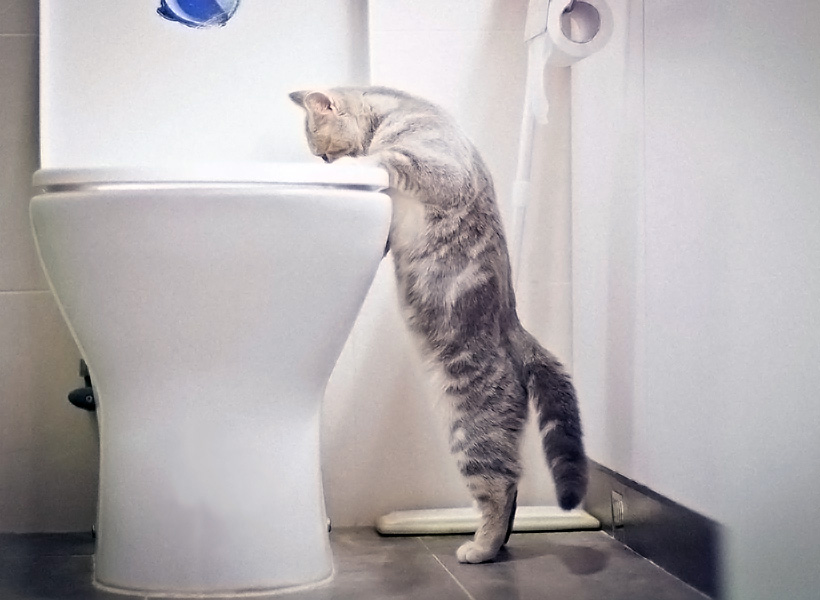Why You Should Avoid Flush Cat Poop Down Your Toilet - Crucial Facts
Why You Should Avoid Flush Cat Poop Down Your Toilet - Crucial Facts
Blog Article
On this page in the next paragraph you can discover a good deal of dependable data on the subject of Can You Flush Cat Poop Down The Toilet?.

Intro
As pet cat proprietors, it's vital to be mindful of how we take care of our feline close friends' waste. While it may seem practical to flush feline poop down the bathroom, this method can have detrimental consequences for both the environment and human health and wellness.
Environmental Impact
Flushing feline poop presents dangerous microorganisms and parasites right into the water system, positioning a considerable risk to aquatic communities. These pollutants can negatively impact marine life and compromise water quality.
Health Risks
Along with ecological problems, purging pet cat waste can additionally posture wellness dangers to people. Feline feces might contain Toxoplasma gondii, a bloodsucker that can create toxoplasmosis-- a potentially severe disease, particularly for pregnant women and people with damaged immune systems.
Alternatives to Flushing
Fortunately, there are much safer and much more accountable ways to take care of feline poop. Consider the following options:
1. Scoop and Dispose in Trash
The most common approach of dealing with feline poop is to scoop it into a naturally degradable bag and toss it in the garbage. Make sure to make use of a devoted trash scoop and throw away the waste promptly.
2. Usage Biodegradable Litter
Opt for naturally degradable feline clutter made from materials such as corn or wheat. These trashes are eco-friendly and can be securely dealt with in the garbage.
3. Bury in the Yard
If you have a lawn, think about burying pet cat waste in an assigned location far from vegetable yards and water sources. Be sure to dig deep adequate to stop contamination of groundwater.
4. Install a Pet Waste Disposal System
Buy a pet dog garbage disposal system particularly made for feline waste. These systems use enzymes to break down the waste, lowering odor and ecological impact.
Final thought
Responsible family pet possession extends past giving food and shelter-- it likewise entails proper waste management. By avoiding flushing feline poop down the commode and opting for alternate disposal approaches, we can reduce our environmental impact and secure human wellness.
Why Can’t I Flush Cat Poop?
It Spreads a Parasite
Cats are frequently infected with a parasite called toxoplasma gondii. The parasite causes an infection called toxoplasmosis. It is usually harmless to cats. The parasite only uses cat poop as a host for its eggs. Otherwise, the cat’s immune system usually keeps the infection at low enough levels to maintain its own health. But it does not stop the develop of eggs. These eggs are tiny and surprisingly tough. They may survive for a year before they begin to grow. But that’s the problem.
Our wastewater system is not designed to deal with toxoplasmosis eggs. Instead, most eggs will flush from your toilet into sewers and wastewater management plants. After the sewage is treated for many other harmful things in it, it is typically released into local rivers, lakes, or oceans. Here, the toxoplasmosis eggs can find new hosts, including starfish, crabs, otters, and many other wildlife. For many, this is a significant risk to their health. Toxoplasmosis can also end up infecting water sources that are important for agriculture, which means our deer, pigs, and sheep can get infected too.
Is There Risk to Humans?
There can be a risk to human life from flushing cat poop down the toilet. If you do so, the parasites from your cat’s poop can end up in shellfish, game animals, or livestock. If this meat is then served raw or undercooked, the people who eat it can get sick.
In fact, according to the CDC, 40 million people in the United States are infected with toxoplasma gondii. They get it from exposure to infected seafood, or from some kind of cat poop contamination, like drinking from a stream that is contaminated or touching anything that has come into contact with cat poop. That includes just cleaning a cat litter box.
Most people who get infected with these parasites will not develop any symptoms. However, for pregnant women or for those with compromised immune systems, the parasite can cause severe health problems.
How to Handle Cat Poop
The best way to handle cat poop is actually to clean the box more often. The eggs that the parasite sheds will not become active until one to five days after the cat poops. That means that if you clean daily, you’re much less likely to come into direct contact with infectious eggs.
That said, always dispose of cat poop in the garbage and not down the toilet. Wash your hands before and after you clean the litter box, and bring the bag of poop right outside to your garbage bins.
https://trenchlesssolutionsusa.com/why-cant-i-flush-cat-poop/

Do you really like more info about Can You Flush Cat Poo or Litter Down the Toilet?? Leave a comment further down. We'd be glad to listen to your thoughts about this blog posting. Hoping that you come back again in the near future. Liked our entry? Please share it. Help someone else locate it. We treasure reading our article about Don’t flush cat feces down the toilet.
Schedule Service Report this page